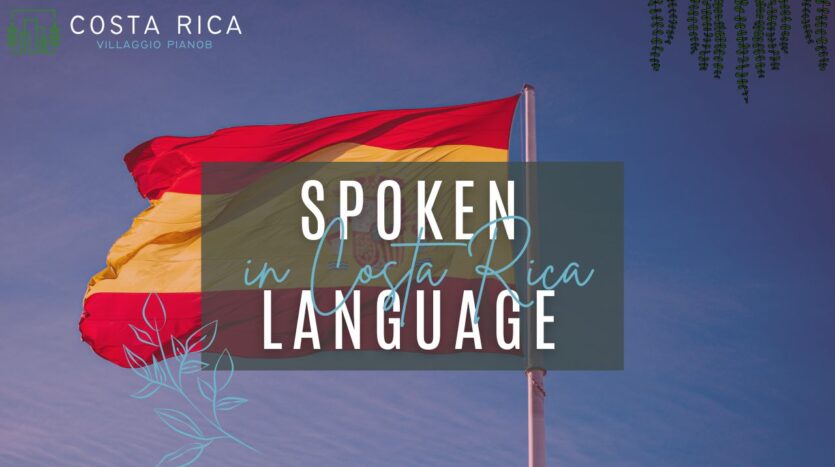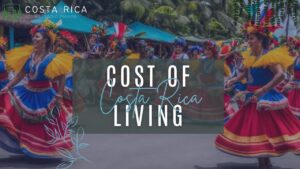What language is spoken in Costa Rica? Do you need Spanish?
Are you planning a trip to Costa Rica and wondering if you need to speak Spanish? In this video, we explore the importance of the Spanish language during your stay in the Central American country. We share personal experiences and helpful tips on how to communicate effectively with locals, discover tourist attractions and immerse yourself in local culture. You’ll discover how useful it is to have at least a basic knowledge of Spanish for interacting with locals, ordering food in restaurants, negotiating prices in markets, and much more. Even if you’re not fluent, learning a few basic phrases will help you have a more authentic and fulfilling experience during your trip to Costa Rica.
The official and prevalent language of Costa Rica is Spanish, a fundamental element that defines not only daily communication, but also the culture and national identity of the country. For travelers looking to fully immerse themselves in the Costa Rican experience, understanding and using Spanish can be a significant advantage.
The Importance of Spanish in Costa Rica
Spanish is the native language of almost all Costa Ricans and is taught in schools as the primary language. It is used in official, administrative, educational and everyday contexts, making it indispensable for effectively navigating the different situations a traveler might encounter.
Communicate with the Locals
Knowing Spanish not only facilitates practical communication, but also opens cultural doors. Costa Ricans are known for their friendliness and hospitality, and an attempt to speak their language is often met with enthusiasm and appreciation. Even a basic knowledge of Spanish can deepen your relationship with locals, allowing you to grasp cultural nuances and interact more easily with the local community.
Exploring Culture Through Language
The Spanish language in Costa Rica is steeped in unique colloquialisms and sayings, reflecting the identity and humor of the Costa Rican people. Learning these linguistic peculiarities not only enriches cultural understanding, but also makes everyday interactions more lively and authentic.
Tools for Learning Spanish
For travelers eager to master or improve their Spanish before visiting Costa Rica, there are numerous resources available:
Online Courses : Platforms like Duolingo, Rosetta Stone and Babbel offer interactive courses that allow you to learn Spanish at your own pace.
Conversation Lessons: Participating in conversation lessons with native speakers or language exchange groups can quickly improve fluency and understanding.
Immersive Learning: Direct immersion in Spanish culture, through films, music, books and daily interactions, helps improve language skills naturally.
Tips for Traveling with Safety and Respect
While Spanish is crucial to a more authentic experience in Costa Rica, it is also important to respect the local culture and its traditions. Here are some practical tips:
Being Open and Respectful: Showing interest in the local culture and language creates more sincere connections with Costa Ricans.
Practicing Patience: Even if your Spanish isn’t perfect, a willingness to communicate is appreciated. Costa Ricans are usually patient and willing to help.
Take advantage of Learning Opportunities – Every conversation is an opportunity to improve, so make the most of it.
In Costa Rica, in addition to Spanish which is the official and predominant language, there are other minority languages spoken by specific groups of people. However, these languages do not have as official status or wide use as Spanish. Here are some of the minority languages present in the country:
Indigenous Languages : Indigenous languages are spoken by indigenous communities across the country. Some of the indigenous languages found in Costa Rica include Bribri, Cabécar, Maleku, Ngäbere (Guaymí), and Boruca. These languages are primarily spoken in their respective indigenous communities and the regions where they are concentrated.
English: In some tourist areas and large cities, such as San José, you can find people who speak English, especially in the tourism, hospitality and commerce industries. English is often used as a second language to communicate with foreign tourists.
Limonense Creole: In the Caribbean region of the country, especially in the province of Limón, Limón Creole is spoken, a variant of English Creole with African, European and Caribbean influences. It is mainly spoken by people of Afro-Caribbean descent.
Mixed Dialects and Other Minority Languages : There are also some communities that maintain mixed dialects or linguistic varieties, which combine elements of different languages due to the cultural and historical diversity of the country.
While Spanish remains the primary language for communicating throughout the country, linguistic diversity reflects Costa Rica’s rich history and cultural roots, offering visitors the chance to explore even these lesser-known facets of the nation.
Similar posts

Still looking for more information?
Contact our customer service and get all the answers that you need for your life in Costa Rica. We can help you to arrange your relocation as well as send you all the plots and villas available to purchase. Get in touch now!





 Sito web in Italiano
Sito web in Italiano